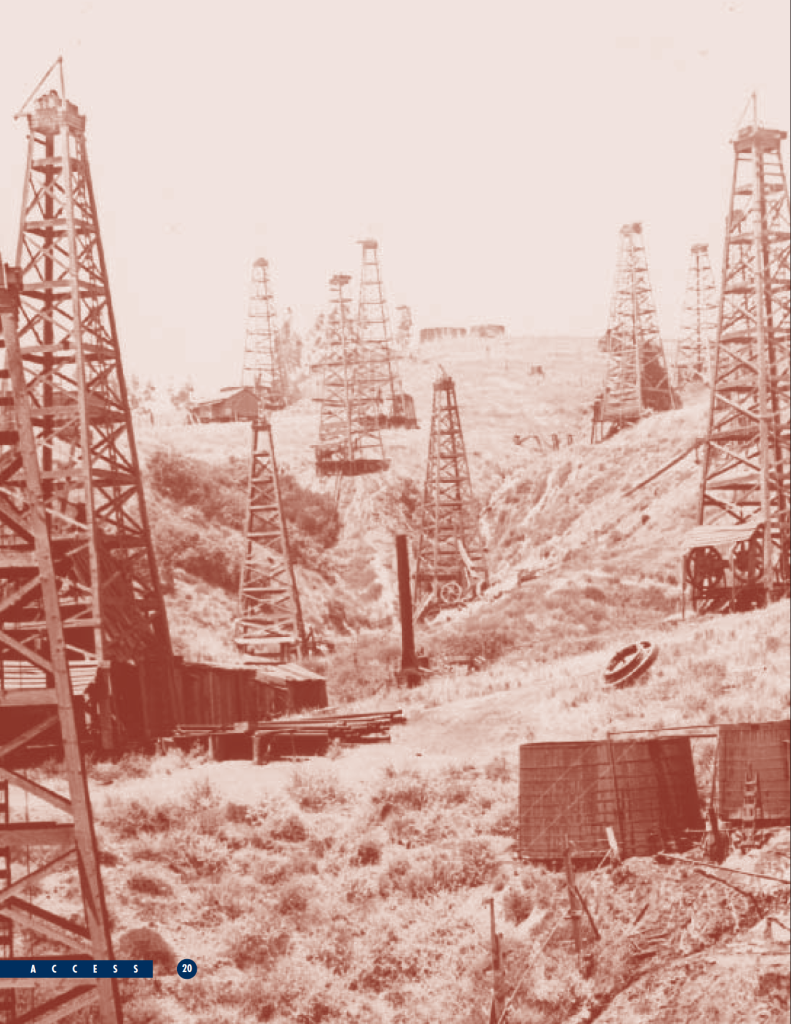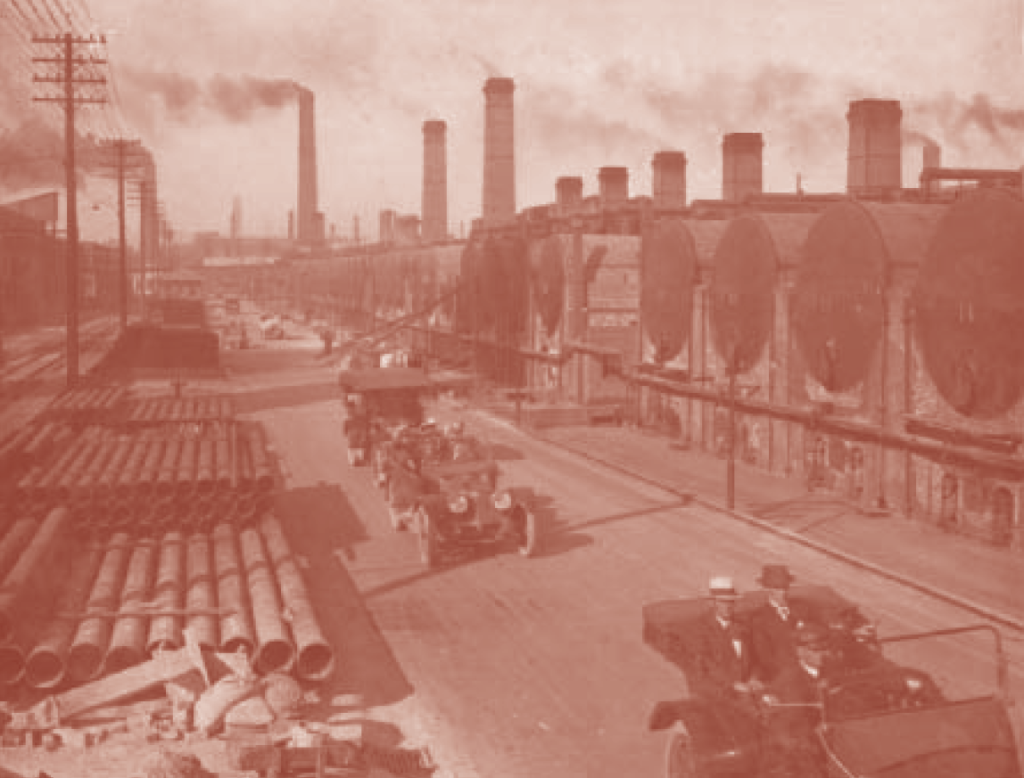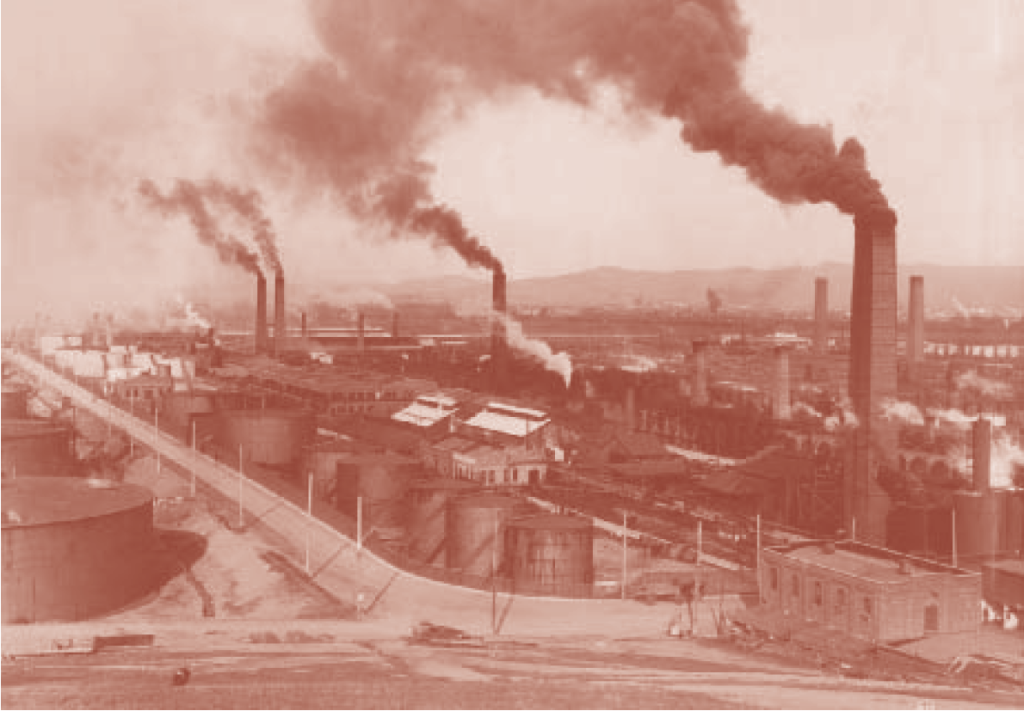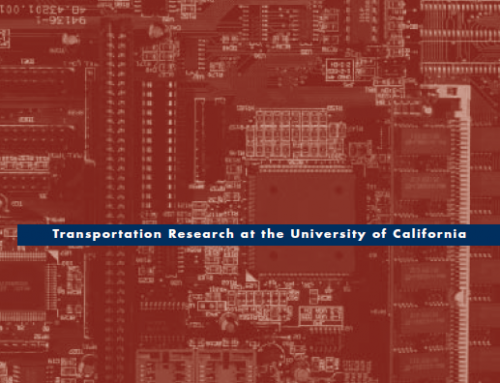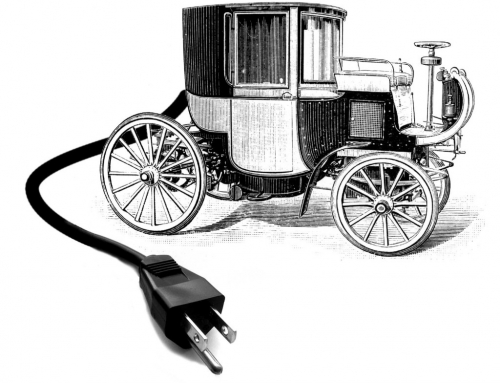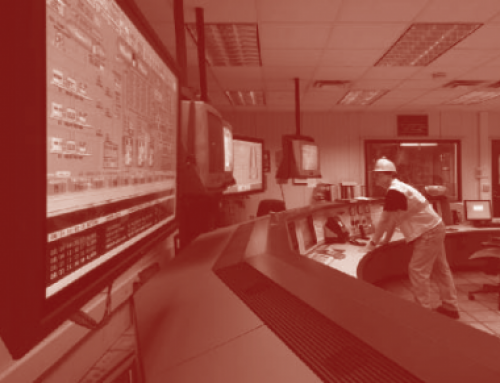
When it comes to energy security and climate change concerns, transportation is the principal culprit. It consumes half the oil used in the world and accounts for almost one fourth of all greenhouse gas (GHG) emissions. In the United States, it plays an even larger role, consuming two thirds of the oil and causing about one third of the GHG emissions in the country. Vehicles, planes, and ships remain almost entirely dependent on petroleum. Efforts to replace petroleum, usually for energy security reasons but also to reduce local air pollution, have continued episodically for years— and largely failed.
The United States and the world have caromed from one alternative to another, some gaining more attention than others but each one eventually faltering. These have included methanol, compressed and liquefied natural gas, battery electric vehicles, coal liquids, and hydrogen. In the United States, the fuel du jour four years ago was hydrogen; two years ago it was corn ethanol; now it is electricity for use in plug-in hybrid electric vehicles. Worldwide, the only non-petroleum fuels that have gained significant market share are corn ethanol in the US and sugar ethanol in Brazil. With the exception of the latter, petroleum’s dominance has never been seriously threatened anywhere since taking root nearly a century ago.
The fuel du jour phenomenon is fed by oil market failures, overblown promises, the inertia of oil industry investments, and the short attention spans of government, the mass media, and the public. Alternatives emerge when oil prices are high, but wither when prices fall. They rise when public attention is focused on the environmental shortcomings of petroleum fuels, but dissipate when oil and auto companies marshal their considerable resources to improve their environmental performance. When George H. Bush advocated methanol fuel in 1989 as a way of reducing vehicular pollution, oil companies responded by offering cleaner-burning reformulated gasoline (and later, cleaner diesel). And when air regulators in California and the US adopted aggressive emission standards for engines, vehicle manufacturers diverted resources to improve combustion and emission control technologies.
Alternatives emerge when oil prices are high, but wither when prices fall.
Another problem is the ad hoc approach of governments to petroleum substitution. The US government provided loan and purchase guarantees for coal and oil shale “synfuels” in the early 1980s when oil prices were high, passed a law in 1988 offering fuel economy cred- its for flexible-fuel cars, launched the Advanced Battery Consortium and Partnership for a New Generation of Vehicles in the early ’90s to accelerate development of advanced vehicles, promoted hydrogen cars in the early years of this decade, provided tens of billions of dollars in federal and state subsidies for corn ethanol, and now is providing incentives for plug-in hybrids. State initiatives included California’s purchases of methanol cars in the 1980s and its zero emission vehicle requirement of 1990. These many alternative fuel initiatives have failed to move us away from petroleum-based transportation in part because the government did not adopt supporting incentives and plans. More durable policies are needed—ones that are based on performance, that stimulate innovation, and that reduce consumer and industry risk and uncertainty.
Policy Solution
To reduce oil dependence and emissions from transportation we must improve vehicle efficiency, reduce vehicle use, and decarbonize fuels. A new policy approach, we have learned from the past, will be most successful if it embraces certain principles. It must inspire industry to pursue innovation aggressively, and it must be flexible, performance-based, and inclusive so that industry picks the winners, not government. Importantly, any new policy approach should also take account of all greenhouse gas emissions associated with the production, distribution, and use of the fuel, from the source to the vehicle.
We believe a Low-Carbon Fuel Standard (LCFS) is an important and compelling policy instrument for shifting away from petroleum and decarbonizing our transportation fuels. It meets all the criteria listed above. The LCFS is a performance standard that measures CO2 equivalent grams per unit of fuel energy. An important feature of LCFS is that it takes account of emissions along the entire energy pathway, from source to vehicle. This lifecycle approach is important because it assures that all emissions associated with a fuel are included, from the vehicle that consumes the fuel all the way upstream to the cornfields and oil wells. While upstream emissions account for a small portion of total greenhouse gas emissions from petroleum (about twenty percent), they represent almost the total lifecycle emissions for fuels such as electricity and hydrogen. The new types of fossil energy that companies are using to supplement dwindling sources of conventional crude oil, especially very heavy oils and tar sands, also emit a larger share of their lifecycle emissions in upstream extraction, production, and refining.
A low-carbon fuel standard provides a durable framework, doesn’t pick winners, encourages innovation, and sends an unambiguous signal to fuel providers that alternatives are welcome.
The LCFS is the first major public initiative to codify lifecycle concepts into law. The point of regulation could occur anywhere along the energy chain, from the individual user all the way upstream to the fuel producers. To ease administration, it is best placed as far upstream as practical—meaning on oil refiners, importers, and fuel producers. An important feature of the LCFS should be the ability to buy and sell credits, which would help reduce the cost of achieving the reductions. A tradable credit market would give companies a strong incentive to invest in new and better ways to produce lower carbon fuels. An oil refiner could, for instance, buy credits (or the fuels themselves) from biofuel producers or from an electric utility that sells power to electric vehicles. Those companies that are most innovative and best able to produce low-cost, low-carbon alternative fuels would thrive, and overall emissions would be lowered at less cost for everyone.
 The idea of imposing a low-carbon fuel standard is highly attractive because it provides a durable framework, doesn’t pick winners, encourages innovation, and sends a direct, unambiguous signal to fuel providers that alternatives are welcome. It’s a hybrid of regulatory and market approaches, which makes it more politically palatable (and economically efficient) than a purely regulatory approach.
The idea of imposing a low-carbon fuel standard is highly attractive because it provides a durable framework, doesn’t pick winners, encourages innovation, and sends a direct, unambiguous signal to fuel providers that alternatives are welcome. It’s a hybrid of regulatory and market approaches, which makes it more politically palatable (and economically efficient) than a purely regulatory approach.
The concepts underlying the LCFS are not unique, but the intellectual and programmatic antecedents of the LCFS are remarkably sparse. The intellectual origin of the LCFS might be traced to Jonathan Rubin’s 1993 PhD dissertation at the University of California, Davis, evaluating the use of tradable credits and emission performance standards in transitioning to alternative transportation fuels. Surprisingly, the scholarly literature is otherwise largely quiet on the concept of carbon standards for fuels. John DeCicco and Jason Mark suggested it in various publications in the 1990s, but not until Bob Epstein, a former Silicon Valley entrepreneur, began promoting the concept in 2005 did it gain prominent attention. He and others, especially Roland Hwang of Natural Resources Defense Council, an advocacy group, pitched the concept to California Governor Arnold Schwarzenegger in fall 2006. In January 2007, Governor Schwarzenegger directed the California Air Resources Board (CARB) to develop and implement a low-carbon fuel standard to spur technological innovation and investment in alternative fuels. The California Air Resources Board adopted the LCFS on April 23, 2009, with a nine-to-one vote. This revolutionary new requirement calls for at least a ten percent reduction in greenhouse gas emissions (per unit of energy) by 2020.
The European Union unveiled a similar proposal just two weeks after Governor Schwarzenegger, and in December 2008 its Parliament adopted an amended “fuel quality directive” that is very similar to the California LCFS—with EU leaders publicly indicating it was their intent to closely imitate the California standard. In January 2009, eleven North- eastern and mid-Atlantic states signed a letter committing to cooperate in developing a regional LCFS.
Why LCFS?
Instead of the LCFS, why not use a volumetric standard like the renewable fuels standard (RFS) adopted by the US Congress? The RFS requires 36 billion gallons of biofuels to be sold annually by 2022, of which 21 billion must be advanced biofuels, while 15 billion can be corn ethanol. The advanced biofuels must achieve at least fifty percent reduction in lifecycle GHG emissions, and a subcategory must meet a sixty percent reduction target. These targets take account of lifecycle GHG emissions, including indirect emissions from changes in land use around the world in response to the changing fuel market. While the renewable fuels standard is a step in the right direction, it has three shortcomings. First, it targets only biofuels. Second, the fifty and sixty percent greenhouse gas reductions are an admirable but clumsy effort that forces biofuels into a small number of fixed categories, which could stifle innovation. And third, the RFS exempts existing and planned corn ethanol production facilities from the greenhouse gas requirements, essentially mandating a massive unfettered expansion of corn ethanol. Rapid expansion of corn ethanol not only stresses food markets and requires vast amounts of water, but also pulls large quantities of prairie lands, pastures, rainforests, and other lands into intensive agricultural production—to replace corn acreage that has been diverted to ethanol production—which means some corn ethanol will likely have higher overall GHG emissions than gasoline or diesel fuels.
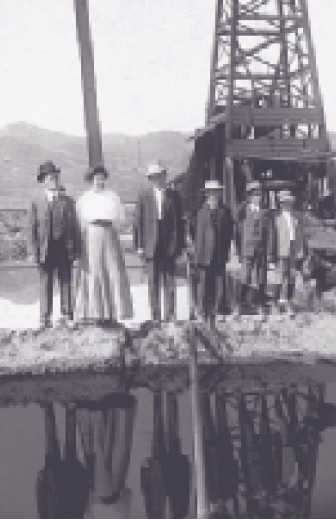
Many argue that a carbon tax or cap-and-trade program would improve the RFS. Economists argue that carbon taxes—taxes on energy sources that emit carbon dioxide— would be a more economically efficient way to introduce low-carbon alternative fuels. Former Federal Reserve chairman Alan Greenspan, car companies, and economists on the left and the right all have supported carbon and fuel taxes as the principal cure for both oil insecurity and climate change. But carbon taxes have shortcomings. Not only do they attract political opposition and public ire, they are of limited effectiveness, and they work better in some situations than others. They work well with electricity generation, for example, because electricity suppliers can choose among a wide variety of commercially available low-carbon energy sources. Given the many energy choices available, a tax of as little as $25 per ton of carbon dioxide would increase the retail price of electricity made from coal by seventeen percent; this increase would effectively motivate electricity producers to seek lower-carbon alternatives. Carbon taxes could transform the electricity industry.
But transportation is a different story. Producers and consumers would barely respond to even a $50-a-ton tax, well above what US politicians have been considering. Oil producers wouldn’t respond because they’ve become almost completely dependent on petroleum to supply transportation fuels and can’t easily find or develop low-carbon alternatives within a short time frame. Equally important, a transition away from oil depends on automakers and drivers changing their behavior—and they also would be unmotivated by a carbon tax. A tax of $50 a ton would raise the price of gasoline only about 45 cents a gallon. This would barely reduce gas consumption, let alone induce drivers to switch to low-carbon alternative fuels when virtually none are available.
Carbon cap-and-trade programs suffer the same shortcomings as carbon taxes. This policy, as usually conceived, involves placing a cap on the carbon dioxide emissions of large industrial sources and granting or selling emission allowances to individual companies for use in meeting their caps. Emission allowances, once awarded, can be bought and sold. In the transportation sector, a cap would be placed on oil refineries’ emissions, requiring them to reduce carbon dioxide emissions associated with the fuels they produce. The refineries would be able to trade credits among themselves and with others. As the cap is tightened over time, pressure would build to improve the efficiency of refineries and introduce low-carbon fuels. Refiners are likely to increase the prices of gasoline and diesel to subsidize low-carbon fuels—creating a market signal for consumers to drive less and for producers of cars to make them more energy efficient. But if the cap is not very stringent, this signal would likely be relatively weak for the transportation sector.
Given the huge barriers to alternative fuels and the limited impact of increased taxes and prices on transportation fuel demand, a low-carbon fuel standard seems to be the most effective instrument available to orchestrate the transition to alternative fuels. Some day, when innovation results in advanced biofuels and electric and hydrogen vehicles become commercially viable, cap-and-trade and carbon taxes will become effective policies with the transport sector. But until then, we need more direct forcing mechanisms like the low-carbon fuel standard for refiners to stimulate innovation and overcome the many barriers to change. The LCFS cannot stand alone, however. It must be coupled with other policies, including fuel efficiency and greenhouse gas emission standards for vehicle suppliers, infrastructure to support alternative fuel distribution, and incentives and rules to reduce driving and enhance transportation alternatives. That, indeed, is California’s approach and one that might be embraced by the US and others.
Details of the LCFS
 California’s proposal would impose a ten percent reduction in lifecycle GHG emissions by 2020 on all transport fuel providers, including refiners, blenders, producers, and importers. Aviation and certain maritime fuels are excluded because California either has limited authority over them or cannot overcome logistical challenges.
California’s proposal would impose a ten percent reduction in lifecycle GHG emissions by 2020 on all transport fuel providers, including refiners, blenders, producers, and importers. Aviation and certain maritime fuels are excluded because California either has limited authority over them or cannot overcome logistical challenges.
There are several ways that regulated parties can comply with an LCFS. Refiners can blend low-GHG fuels, such as biofuels made from cellulose or wastes, into gasoline and diesel. Or they can buy low-GHG fuels such as natural gas, biofuels, electricity, and hydrogen. They can also buy credits from other refiners or use banked credits from previous years. In the EU, producers may also earn credit by improving energy efficiency at oil refineries or by reducing upstream CO2 emissions from petroleum and natural gas production.
A major challenge for the LCFS is avoiding “shuffling.” Companies will seek the easiest way of responding to the new requirements, which might involve shuffling production and sales in ways that meet requirements without actually creating a net change in emissions. For instance, a producer in Iowa could divert its low-GHG cellulosic biofuels to California markets, and send its high-carbon corn ethanol elsewhere. The same could happen with gasoline made from tar sands and conventional oil. Environmental regulators will need to account for shuffling in their rules. This problem will eventually disappear as more states and nations adopt the same regulatory standards and requirements.
When bio-fuel production increases, land is diverted from food and fiber production to energy production.
Perhaps the most controversial and challenging issue is land use changes. When bio-fuel production increases, land is diverted from food and fiber production to energy production. The displaced agriculture is replaced elsewhere, which for the most part brings new land into intensive agricultural production. This newly farmed land might have been pasture or, because markets are international, perhaps even rainforest. Because soils sequester a vast amount of carbon in roots and organic material—effectively storing more than twice the carbon contained in the entire atmosphere—any change in land usage can have a large effect on carbon releases. Large amounts of carbon are also released when above-ground vegetation is removed, especially from forests.
If biomass production does not cause the removal of large amounts of soil carbon or competition for land via direct or indirect land conversion—for instance when its sources are crop residues or urban trash—then indirect land use effects are small or even zero. But if rainforests are destroyed or peat burned, as is occurring in southeast Asia to accommodate growing demand for palm oil to supply biodiesel for the European market, then the carbon releases are huge. In extreme cases, these land use shifts result in each gallon of palm oil releasing several times as much carbon as the diesel fuel it replaces. In the case of corn ethanol, the indirect land use effects are smaller, but still significant. Cellulosic fuels would have a much smaller effect, and waste biomass, such as crop and forestry residues and urban waste, would not compete for land and result in no land use changes.
The problem is that few scientific studies have attempted to quantify the indirect land use effect. The prudent approach for regulators is to use available science to assign a conservative value to the effect, and then provide a mechanism to update these assigned values as science improves. Meanwhile, companies should focus on biofuels with low greenhouse gas emissions and minimal indirect land use effects—fuels created from wastes and residues and from biomass grown on degraded or marginal land or with very high yields per unit of land (e.g., grasses, some tree species, and algae). Those feedstock materials and lands should be the heart of a future biofuels industry, instead of intensively farmed food crops like corn.
Going National And International With A Low-Carbon Fuel Standard
The principle of performance-based standards lends itself to adoption of a national or even international LCFS. The California program is designed to be compatible with a broader program and in fact will be much more effective if the entire US as well as other countries also adopt it. Existing volumetric biofuel requirements could be readily converted into an LCFS by converting them to greenhouse gas requirements. In the US that would not be difficult, since GHG requirements are already imposed on required biofuels. The European biofuels programs could also be converted similarly. Indeed, in Europe and the UK the Renewable Transport Fuel Obligation’s evolving carbon and sustainability reporting and certification schemes are already gravitating away from a pure volumetric requirement and toward an LCFS.
An important innovation of the California LCFS is its embrace of all transportation fuels. The US renewable fuels standard and the European programs, in contrast, include only biofuels, not gaseous fuels or electricity (although biogas is eligible for credits in the EU, and the December 2008 revisions of the EU fuel quality directive envision a future role for electric vehicles). While it is desirable to cast the net as wide as possible, there is no reason why all states and nations must target identical fuels.
Broader LCFS programs are attractive for three reasons. First, it would be easier to include fuels used in international transport modes, especially jets and ships. California is excluding these fuels initially because it has limited jurisdiction over international modes of travel. Second, a broader low-carbon fuel standard would facilitate standardization of measurement protocols. California is currently working with fuel-exporting nations to develop common greenhouse gas emissions specifications for their fuels. And third, the broader the pool, the greater the options available to regulated entities. More choice means lower over-all cost, since there will be greater chance of finding low-cost options to meet targets.
The California program is designed to be compatible with a broader program and in fact will be much more effective if the entire US as well as other countries also adopt it.
Conclusion
The ad hoc policy approach to alternative fuels has largely failed. A more durable and comprehensive approach is needed that encourages innovation and lets industry pick winning technologies. The LCFS does that. It provides a single greenhouse gas performance standard for all transport fuel providers, and uses credit trading to ensure the transition is accomplished in an economically efficient manner. It encourages investments in low-carbon fuels and provides strong incentives to produce high-carbon fossil fuels more energy efficiently and with low-carbon energy inputs.
While one might prefer more theoretically elegant policies such as carbon taxes and cap-and-trade, those instruments are not likely to be effective with transport fuels in the foreseeable future. Though they would be attractive complementary measures, by themselves they are not sufficient to induce large investments in electric vehicles, plug-in hybrids, hydrogen fuel cell vehicles, and advanced biofuels.
Ideally, the US and other nations will eventually adopt a low-carbon fuel standard. This will probably require some political accommodations, such as variation in targets across nations and possibly states. One unacceptable accommodation, however, would be a failure to require standardized measurement protocols. The prospect of an international LCFS that guides the transformation of transportation fuels and oil companies is a very real possibility. Indeed, the low-carbon fuel standard promises to play a central role in creating a low-carbon energy future.
Acknowledgments
We honor our colleague, Professor Alex Farrell, for his leadership and intellectual contribu- tions in developing the initial design of California’s LCFS. Along with Daniel Sperling, he co-directed the initial study design of the Low Carbon Fuel Standard in California and helped conceptualize this paper before his untimely death in April 2008. This paper is adapted from and similar to Daniel Sperling and Sonia Yeh’s article, “Low Carbon Fuel Standard,” in Issues in Science and Technology, Winter 2009, pp. 57–66.
Further Readings
California Air Resources Board. Low Carbon Fuel Standard Program, 2009.
Alexander E. Farrell and Daniel Sperling. A Low-Carbon Fuel Standard for California, Part 1: Technical Analysis (Institute of Transportation Studies, University of California, Davis, 2007, Research Report UCD-ITS-RR-07-07).
Alexander E. Farrell and Daniel Sperling. A Low-Carbon Fuel Standard for California, Part 2: Policy Analysis (Institute of Transportation Studies, University of California, Davis, 2007, Research Report UCD-ITS-RR-07-08).
Timothy Searchinger, Ralph Heimlich, R. A. Jacinto Fabiosa, Simla Tokgoz, Dermot Hayes, and Tun-Hsiang Yu, “Use of US Croplands for Biofuels Increases Greenhouse Gases Through Emissions from Land Use Change,” Science, vol. 319, no. 5867, 2008.
Holly K. Gibbs, Matt Johnston, Jonathan A. Foley, Tracey Holloway, Chad Monfreda, Navin Ramankutty, and David Zaks, “Carbon Payback Times for Crop-Based Biofuel Expansion in the Tropics: The Effects of Changing Yield and Technology,” Environmental Research Letters, vol. 3, no. 034001, 2008.
Jonathan Rubin. Marketable Emission PermitTrading and Banking for Light-Duty Vehicle Manufacturers and Fuel Suppliers. (ITS-Davis, 1993, Publication No. UCD-ITS-RR-93-20).
Daniel Sperling and Deborah Gordon. Two Billion Cars: Driving Toward Sustainability (Oxford University Press, 2009).

